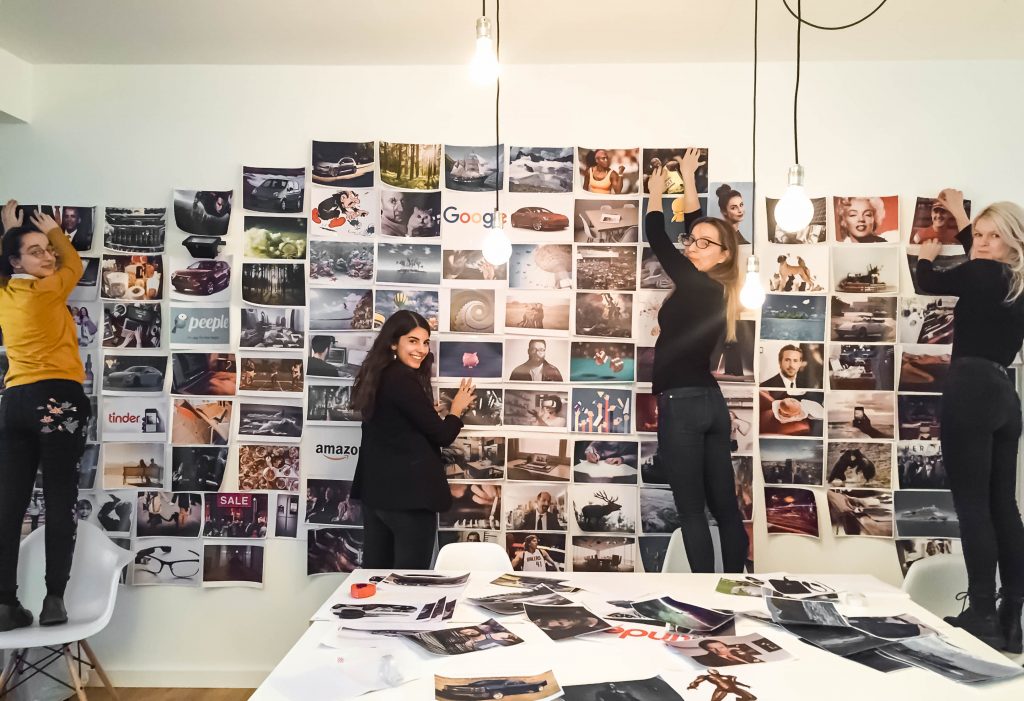Have you ever wondered why it is easy to remember the plot, in immense detail, of your favourite childhood movie, but not an important percentage you read in a budget yesterday?
It turns out stories are remembered 22 times more than facts.
How do we use this to our advantage in the branding world? We tell a story that is so compelling, sincere, and captivating for our consumers- that they buy into our proposition and build a long term emotional connection with our brand. Why is your brand important to the success of your company? Nobody will care about your brand if you don’t. Let’s explore the ways in which we can achieve a successful brand story.
5 TIPS FOR A BRAND STORY THAT WON’T BE FORGOTTEN
- UNDERSTAND WHY.
What’s your purpose? What’s your cause? Why does your brand exist? And why should anyone care? People don’t buy what you do, people buy why you do it.
Simon Sinek developed what he calls the “Golden Circle,” which encompasses understanding ‘why’ – the core belief of the business and reason for existence, ‘how’ – the ways in which the business fulfills that core belief, and ‘what’ – the company’s actions to fulfill that core belief. It is seen that many companies get caught up in communicating primarily the ‘what’ of their story, which means that those that truly start with the ‘why’, and convey this sincerely, are set apart. (Listen to Simon Sinek’s famous Ted Talk here.)
The goal is not just to sell to people who need what you have, the goal is to sell to people who believe what you believe. This explains why people are willing to camp overnight in streets to be first in line for the new iPhone- not because there are no similar product offerings, but because they have truly bought into Apple’s ‘why’ and their brand story.
Understanding the why of your brand is essential for developing its story. So, know why you do what you do, and think, act and communicate this from the inside out.
- KNOW YOUR AUDIENCE.
Get to know your audience – really know them. Go beyond basic demographics like income, age, and media habits to find out what makes them tick. What makes them excited? What concerns them? Why and how do they use your brand in their personal lives?
A useful exercise to understand your consumer is to deeply question their motivations for using your product. In doing so you should be able to identify 3 key benefits:
- Functional: what do I use the product to achieve? In this category we often find points of parity with other brands.
- Emotional: what connection have I built with this product? This is where points of differentiation start to come through.
- Self-expressive: what does the product say about me when I use it? This is the most powerful benefit.
Make your audience the hero in your story. Understanding who they are and what benefits you offer provides the basic elements to build your story, and this assists in maintaining relevance to their lives which makes them want to listen. Always tell a story that is relevant not only to your brand- but to the lives of society and the people who interact with it. The daily challenges they face become your plot, and how your brand helps them overcome their challenges becomes the resolution.
- DEVELOP A CHARACTER.
A character is essentially a shortcut to emotional engagement. Audiences already feel predisposed to them and can relate to the message and point of view that is being conveyed.
A useful exercise to identify your brand’s character is to understand associations that may be felt with other existing entities. For example, if your brand were an actor, who would it be – Sheldon from Big Bang Theory, or Harvey from Suits? How about food – sushi or currywurst?
Your brand needs a personality, and from this you can derive key values and tone – of which should be consistent across all touchpoints engaging with the consumer. If you are Harvey on your website, don’t be Sheldon on your Facebook page. Keeping things consistent expresses sincerity and will build trust.
Here is our RCKT team preparing a brand character exercise for one of our workshops.
- SIMPLIFY YOUR MESSAGE.
According to a study by Microsoft, our attention span has dropped from 12 seconds in 2000 (around the time the ‘mobile revolution’ began) to just 8 seconds today. At the same time our ability to multi-task is improving where 79% of study respondents regularly use dual screens – such as watching TV while using a smartphone.
This means that the amount of time you have to capture an audience’s attention is decreasing significantly and as a result you have to really stand out. Concept, language, and imagery used should be clear to understand and used with a message that can be easily explained and identified with.
A useful exercise to identify the most significant touch points for your brand’s message is by analysing:
- The first point of contact with the brand. What initial impression is created?
- The last point of contact with the brand. Will they come back?
- Point of frequency. How often do they experience this?
- Point of impact. What is the ‘wow’ key selling moment?
Check out the campaign we did for Foodspring here, where the healthy eating lifestyle message was refined to a single hashtag #mybodymybuddy.
- AMPLIFY YOUR STORY WITH DIGITAL.
As digital natives at RCKT, we love a viral campaign. Using new digital technologies and interactive platforms can take your brand story to the next level and truly integrate it into the daily lives of your target consumer. It is important to be inventive and surprising, and add value to the brand experience. Using digital gives you a great collection of tools to move beyond passive participation.
An example of an interactive digital campaign is Pepsi’s drone festival friend finder connecting friends with a Pepsi app (watch here). Another is Graubünden Tourism’s Great Escape, an electronic live placard taking stressed city dwellers from Zurich’s main station to the countryside of Vrin. (watch here) It’s all about balancing content with context, and immersing your audience in your story to really believe it.
Did you know we are exposed to more than 5000 brands a day? In summary, to create a brand story that won’t be forgotten amongst the clutter; make sure to understand the ‘why’ of your business, truly know your audience, develop a strong character, simplify your message, and make use of the opportunities to amplify it all with digital, of course!
Are you looking to identify or build up your brand story?
At RCKT we run interactive brand workshops which do just that.
We’d love to work together with you.
Contact us at hello@rckt.com

